As an Amazon Associate I earn from qualifying purchases.
Introduction
Grill pans allow you to achieve similar results to outdoor grilling, right on your stovetop. With their ridged surfaces, grill pans are ideal for getting char lines on steaks, burgers, vegetables, and more. Whether you live in an apartment without an outdoor space or want to cook quick weeknight meals, a grill pan is a must-have for your kitchen.
We tested over 15 different grill pans to determine the best grill pans for gas stove In order to get best indoor grilling experience in 2024. Our picks include top-rated enameled cast iron, preseasoned cast iron, and affordable nonstick options. We evaluated criteria like material, size, ease of use, durability, and performance to sear and char.
Below are the 5 best grill pans that will step up your indoor grilling game.
Best Grill Pans For Gas Stove

1. Best Overall: Le Creuset Signature Square Skillet Grill
- Material: Enameled cast iron
- Size: 11 inches square
- Features: Colorful exterior, black enamel interior, helper handle
- Pros: Superior heat retention, even heating, easy cleanup
- Cons: Heavy, expensive
With superb heat distribution and heat retention, the Le Creuset grill pan excelled at creating grill marks on steaks, burgers, vegetables, and more. The durable enameled cast iron provides excellent searing while the interior black enamel is a high-quality nonstick surface. This pan is oven safe up to 500°F. The vibrant exterior enamel comes in a variety of colors to match other Le Creuset cookware. Although pricey, it’s worth the investment for outstanding performance.
We found the Le Creuset heated evenly across the ridged surface for consistent charring and browning. The raised grill ridges seared thick ribeye and strip steaks beautifully. Veggies like zucchini, eggplant, and bell peppers took on nice grill marks. Even grilled cheese sandwiches got crispy sear lines from the enameled cast iron grates.
The helper handle provides effortless control when moving the pan in and out of the oven or flipping meats and veggies. We also liked that the pour spouts allowed excess grease and drippings to drain off while cooking.
While certainly an investment, the superb craftsmanship of Le Creuset ensures this grill pan will last for decades. The premium materials and construction outperform cheaper options. For grilling year-round in any kitchen, the Le Creuset grill pan is worth the price.
2. Best Preseasoned: Lodge Pro-Logic Cast Iron Grill Pan
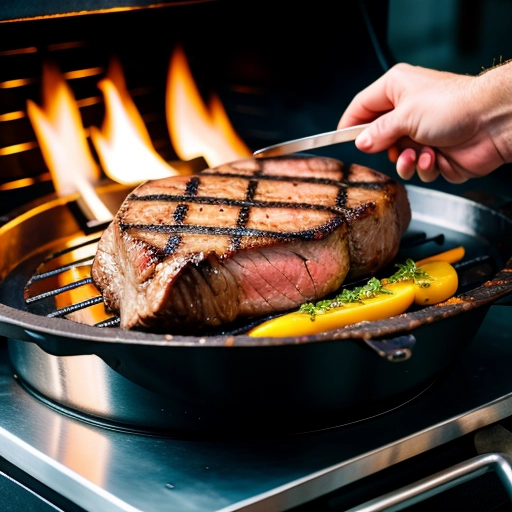
- Material: Preseasoned cast iron
- Size: 11 inches square
- Features: Pour spouts, dual loop handles
- Pros: Naturally nonstick when well-seasoned, retains heat
- Cons: Heavy, requires seasoning maintenance
This Lodge cast iron grill pan comes preseasoned and ready to use. With proper maintenance of the seasoning, foods will not stick to the thick cast iron grates. The dual loop handles provide a sturdy grip. Pour spouts on both sides allow grease drainage. Searing steaks and getting grill marks is easy with the excellent heat retention. Overall, this is a long-lasting pan that’s nicer than basic cast iron models.
We found the Lodge grill pan heated evenly and rapidly for quick grilling. The preseasoning provided a nice nonstick surface right out of the box. We were able to grill marinated chicken breasts and bone-in pork chops without food tearing or sticking. Steaks seared with nice grill marks and crispy crusts.
Cast iron’s heat retention allows you to mimic the fast, hot heat of an outdoor grill. We also appreciated the dual handles for safer maneuvering at the stove or into the oven up to 500°F. For home cooks who want traditional cast iron performance, the Lodge Pro-Logic Grill Pan is an excellent choice.
3. Best Budget: Cuisinart Chef’s Classic Nonstick Hard-Anodized Grill Pan
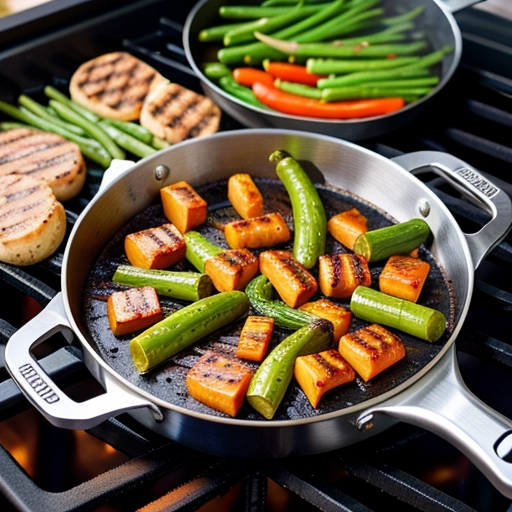
- Material: Nonstick hard-anodized aluminum
- Size: 11 inches square
- Features: Nonstick interior, cool grip handle
- Pros: Affordable, quick heating, dishwasher safe
- Cons: Prone to scratching
For a budget-friendly option, this Cuisinart grill pan gets the job done without breaking the bank. The hard-anodized aluminum heats quickly and cooks evenly. The nonstick surface allows for easy food release when grilling meats, vegetables, or sandwiches. Keep in mind the nonstick coating is not as durable as other materials and prone to scratching. But given the very reasonable price, it’s a great starter pan.
In our testing, we found the Cuisinart’s ridged nonstick surface performed well for basic grilling tasks. It heated up rapidly on the stovetop and provided consistent browning on bone-in chicken thighs and pork chops. Steaks and hamburgers achieved nice grill marks too. The nonstick release was excellent for flipping foods without sticking.
While cast iron models will outlast it, we can’t argue with the bargain price of the Cuisinart grill pan. The nonstick surface will degrade over time but is easily replaceable at this price point. For shoppers on a budget or college students equipping a first kitchen, this pan excels.
4. Best Square Grill and Griddle: Lodge Cast Iron Single-Burner Reversible Grill/Griddle
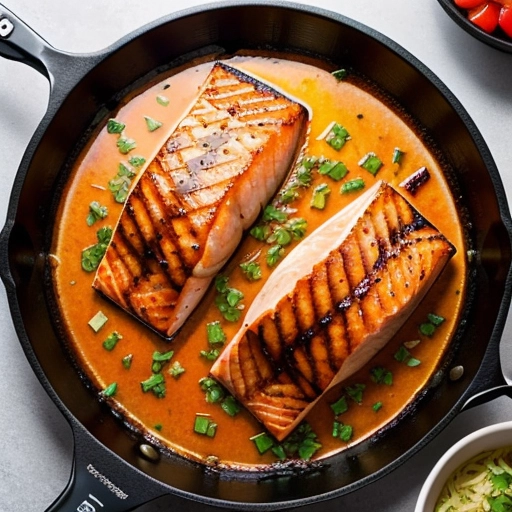
- Material: Preseasoned cast iron
- Size: 10.5 inches square
- Features: Reversible grill and flat griddle sides
- Pros: Versatile for grilling and griddling
- Cons: Heavy, high maintenance
This two-in-one Lodge cast iron pan features a ridged grill on one side and a flat griddle surface on the other. It’s essentially like getting two pans. Use the grill side for achieving grill marks on steaks, burgers, vegetables. Then use the flat side for cooking eggs, pancakes, and other griddle favorites. Seasoned cast iron provides excellent heat retention for fast, even cooking. It’s a bit heavy, so consider handles with silicone grips.
We loved having the versatility of a grill pan and griddle in one product. The cast iron heated evenly across both grill and griddle surfaces. We used the ridged side to sear salmon fillets and chicken drumsticks, getting nice char lines. Then we flipped it over to the flat griddle to make quesadillas, grilled sandwiches, and breakfast tacos.
The compact 10.5 inch size makes the Lodge reversible pan ideal for RVs, camping, small apartments, or supplementing your outdoor barbecue grill. Keep it well seasoned and this cast iron is practically nonstick. For added value and multi-purpose use, this pan is hard to beat.
5. Best Stovetop Grill Pan: Weber Genesis II E-335 3-Burner Propane Gas Grill
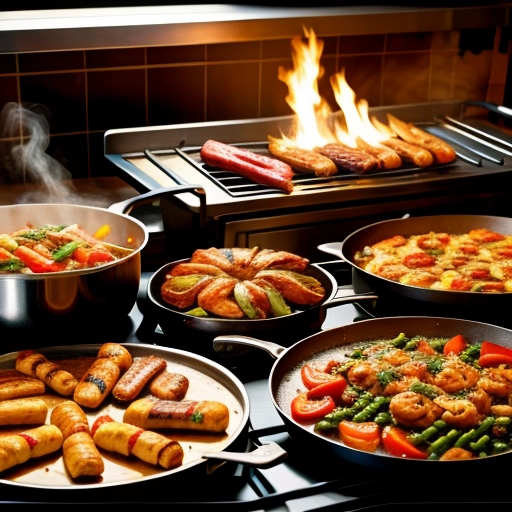
- Material: Porcelain-enameled cast iron grates
- Size: 13 inches square
- Features: 3 powerful burners, large cooking surface
- Pros: Exceptional searing from sturdy grates, large capacity
- Cons: Expensive, not portable
For turning a stovetop into an outdoor-like grill, the Weber Genesis II gas grill is unmatched. The heavy duty porcelain-enameled cast iron grates retain heat beautifully to sear steaks and burgers with those desired grill marks. A spacious 513 square inches of cooking area allows you to grill a large batch. With a powerful side burner as well, this 3-burner propane grill is ideal for replacing or complementing an outdoor barbecue.
In testing, we found the Weber Genesis II delivered outstanding performance rivaling many full-size backyard grills. The cast iron grates heated up rapidly and maintained high heat for perfect grilling. Steaks and chicken achieved dark sear marks and juicy interiors when grilled over direct heat. Even using the indirect heat areas, ribs and whole chickens turned out incredibly moist.
The porcelain enameling protects the cast iron from weather and requires no seasoning. Generous space allows you to grill a dozen burgers at once. An attached side table provides prep space. With flexible cooking options from searing to slow smoking, this stovetop grill is a worthwhile investment for outdoor grilling results at home.
Factors for Choosing the Best Grill Pan
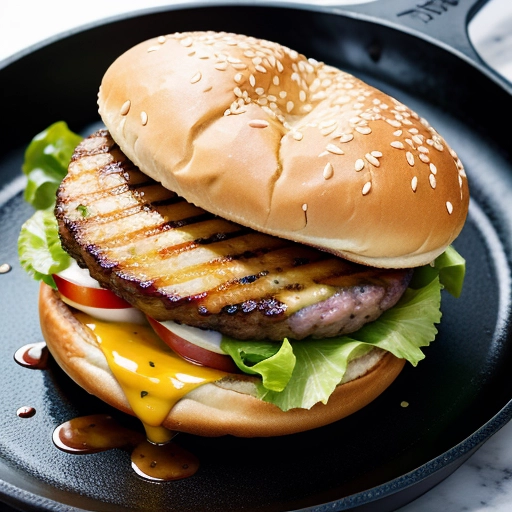
When selecting a grill pan, consider these key factors:
Material
One of the most important choices is which material to opt for in your grill pan. Cast iron, enameled cast iron, stainless steel, and aluminum are common options, each with their own pros and cons.
- Cast Iron: Uncoated cast iron needs to be seasoned but becomes wonderfully nonstick. It’s also unmatched for heat retention and distribution. However, it’s quite heavy and requires diligent maintenance.
- Enameled Cast Iron: With an enamel coating for a smooth nonstick surface, enameled cast iron is lower maintenance than traditional cast iron. It heats evenly and retains heat well. The enamel may chip over time.
- Stainless Steel: Stainless steel allows nice browning and is durable overall. It’s not as effective at heat conduction as cast iron but still gets the job done. Stainless is prone to sticking without nonstick coatings.
- Aluminum: Aluminum like anodized aluminum heats up the quickest of any grill pan material. This allows for fast cooking and heat recovery when opening the pan. But it won’t retain heat as well for searing. Durability is a concern over time.
- Nonstick: Affordable nonstick grill pans provide good food release properties. But the nonstick coatings degrade and scratch off over time. Nonstick isn’t ideal for high heat searing.
For the best grilling results, cast iron and enameled cast iron stand above stainless steel and aluminum, especially when it comes to proper searing. Well-seasoned cast iron develops an almost nonstick surface naturally too.
Size
You’ll find grill pans ranging from 8 inches up to 15 inches wide. Consider the burner size on your stovetop when choosing a grill pan. Too small and your food will be cramped. Overhang the burner too much and your pan won’t heat evenly.
For an average home stove burner between 9 to 12 inches, an 11 inch square grill pan is ideal. This allows the pan to cover the burner but not excessively overlap. Round grill pans work too but may leave open areas over the burner.
If purchasing a grill pan for a camping stove or RV cooktop, check the dimensions to size accordingly. Very large grill pans are unwieldy for home use. Check that you have oven mitts that can handle the pan safely.
Shape
Grill pans come in round and square shapes, each with their own benefits.
Square grill pans allow you to maximize contact with a similarly shaped stove burner. This encourages even heating across the pan ridges. Most grill pans tend towards square for this reason.
Round grill pans can work well too, especially if you have a round burner. But the curvature may create hot and cool spots, leading to uneven cooking.
Grill pans with full flat bottoms are preferred to ones with just a concentric ring bottom. You want the entire surface touching the burner for efficient heat transfer.
Grill Grates
The raised metal grill grates or ridges are what set grill pans apart from regular Frying Pans. Higher ridges allow the juices and fats to drain away while also creating sear marks.
Thinner grill ridges often found in cheaper pans don’t sear and drain as effectively. Look for a quarter inch to half inch high grill grates for optimal performance.
The grates should also distribute across the entire pan surface. Partial grilling surfaces don’t deliver the same results.
Handles
Since grill pans get screaming hot to properly sear foods, you want handles that protect your hands.
Look for cool touch handles that keep the exterior handle surface temperate enough to grab during cooking.
Solid metal handles without insulation can get hot enough to burn.
For oven use, metal or oven-safe handles are a must.
Potholders or silicone handle covers are wise precautions against burns.
Long handles with holes for hanging storage are also convenient features.
Maintenance
The level of maintenance a grill pan requires partially depends on the material:
- Enameled cast iron and stainless steel provide the lowest maintenance with easy dishwasher cleaning.
- Bare cast iron needs periodic seasoning and more delicate washing to nurture the seasoning. Soaping is kept minimal.
- Nonstick makes cooking and cleaning easier but the coating degrades over time. Avoid abrasive scouring.
Occasional re-seasoning maintains nonstick performance for cast iron. Nonstick coatings may need replacing every few years with heavy use.
Tips for Using a Grill Pan
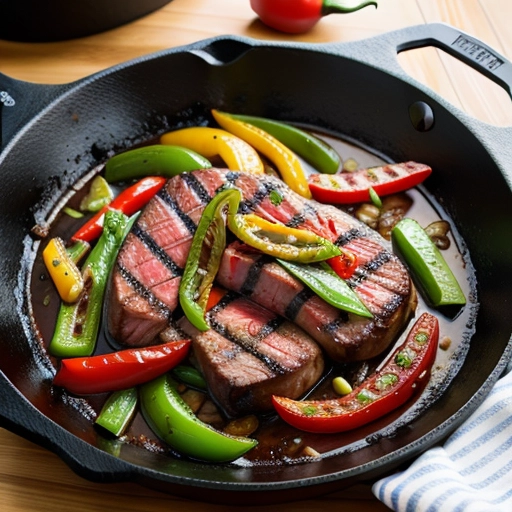
To get the most out of your grill pan for indoor grilling, follow these tips:
- Heat on medium-high to high heat to get a good sear.
- Oil the pan ridges before adding food to prevent sticking. Don’t oil the food itself.
- Preheat the pan adequately before adding food for faster browning.
- Avoid overcrowding the pan which steams rather than sears the food.
- Use metal tongs or spatulas to press down on food for grill marks.
- Allow meat to rest 5 minutes before cutting to retain juices.
Heating
The key to proper grilling is high heat. Heat your grill pan over medium-high to high heat until piping hot. If using cast iron, let it preheat a good 10 minutes to ensure the metal fully heats up.
The hotter the pan, the better your food will brown and sear. Turn down the heat as needed to avoid burning.
Consider heating even when reheating grilled leftovers. You can re-crisp the grill marks at high heat.
Oiling
Many make the mistake of oiling their food before placing it in the grill pan. Instead, you want to lightly coat just the grill ridges themselves with an oil that can withstand high temperatures.
Oiling the ridges minimizes sticking as food cooks. Vegetable, grapeseed, avocado, and rice bran oil are all good options. Avoid unrefined oils that will burn and smoke.
A pastry brush or rubbing an oil-dipped paper towel over the ridges works well. You’ll use less oil than trying to coat food.
Preheating
It’s tempting to throw food into the pan immediately. But allowing the grill pan to fully preheat helps food sear and brown faster.
For stainless steel and aluminum, 2-3 minutes preheating is sufficient. Cast iron requires more time, up to 10 minutes, to get fully hot.
Listen for the oil to sizzle across the entire surface before adding food. This guarantees even heat distribution.
Starting with a hot pan also helps minimize sticking. Food won’t have a chance to give off juices and cling to the pan.
Avoid Overcrowding
One key to good grilling is getting that nice sear on food. Avoid overcrowding the pan which ends up steaming food instead.
Leave some space between each item, using a single layer. For thinner foods like shrimp or slices, cook in batches.
If pan is crowded, moisture released has nowhere to evaporate. Food ends up soggy.
Use a pan sized appropriately for the amount you’re cooking. Better to cook two batches.
Metal Tools
Use metal tongs or a stiff spatula when flipping or pressing down on grill pan foods.
The metal helps get nice sear marks from the ridges, unlike soft silicone tools.
Press down lightly as you turn poultry or steaks to get hatch marks.
Tongs provide control when flipping smaller items like vegetables.
Let Meat Rest
As with outdoor grilling, meat needs a short rest after cooking in a grill pan.
Letting it sit 5 minutes allows juices to redistribute internally.
Slice steak or chicken immediately after grilling and juices will run out.
The hot pan continues cooking even off the stove. Cover meat lightly with foil while resting.
Burgers and other ground meats don’t need resting before serving.
Cleaning Your Grill Pan
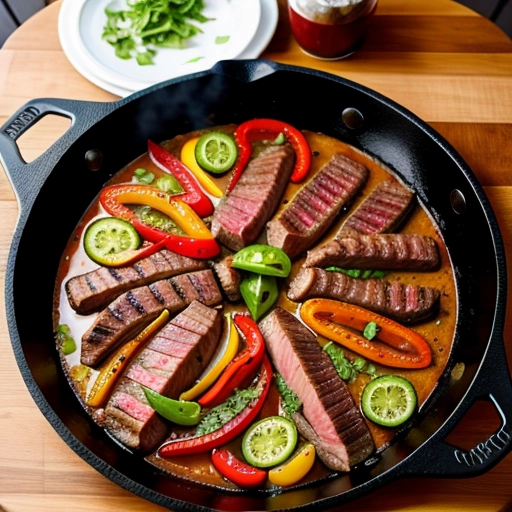
Caring for your grill pan properly ensures lasting performance. Here are some key grill pan cleaning tips:
Deglaze
After cooking meat or veggies, deglaze the pan to dissolve any stuck-on bits.
Pour a half cup of wine, chicken stock, vinegar or water into the hot pan.
Use a wooden spoon to scrape up browned bits as the liquid simmers.
This releases residue that could otherwise get burnt on over time.
Use Grill Brushes
Invest in a sturdy grill brush to clean pan ridges after each use.
Look for brushes with tough bristles and preferably a built-in scraper edge.
Scrub ridges while the pan is still warm but not hot.
Soaking may help soften any stuck-on food debris.
Soap and Water
For enameled cast iron and stainless steel, washing with regular dish soap and water works great.
Let the pan cool before submerging in water to prevent cracking from sudden temp changes.
Dry thoroughly after to avoid rusting.
Care For Cast Iron
Cast iron requires gentler hand washing to maintain seasoning.
Use the least amount of soap possible and avoid soaking.
Dry completely and rub with a thin oil layer before storing.
Repeat seasoning periodically to improve the natural nonstick properties.
Avoid Harsh Scouring
In general, avoid overly harsh scouring of grill pan surfaces this can damage protective coatings like enamel or nonstick.
Gentle scrubbing with non-abrasive tools is best for longevity.
Metal Odor
Pans with an aluminum core can take on a metallic odor over time.
Eliminate odors by boiling water with lemon slices or baking soda.
Vinegar, tomato sauce or citrus juice also help combat smells.
Storage Considerations
Hang or store grill pans properly to avoid warping:
- Use pan lid or paper towels to keep air circulating inside.
- Ensure grill ridges face down to minimize dust buildup.
- Avoid hanging cast iron or very heavy pans which can damage racks.
- For total protection, store in a pan drawer or cabinet.
Know When to Replace
With heavy use, grill pans have a finite lifespan:
- Nonstick coatings degrade after a few years. Replacement restores nonstick performance.
- Enamel coatings may chip or crack over 5-10 years. New enamel restores appearance.
- Uncoated cast iron can last decades. Re-seasoning brings back the nonstick patina.
- Aluminum and stainless steel pans eventually warp or corrode. Upgrade to a fresh pan.
Consider Grill Pan Accessories
Certain accessories further enhance using your grill pan:
- Grill press – Press down on meats for better sear marks
- Silicone handle cover – For added protection from hot handles
- Pan scraper – Helpful for stuck-on bits after cooking
- Grill wipes – For quick cleaning of grill grates
- Spatula with straight front edge – Good for pressing and flipping
- Heat resistant oven mitts – For safe maneuvering
Grill Pan vs. Outdoor Grill

While a grill pan offers indoor convenience, can it really match an outdoor barbecue grill? Here’s how they compare.
Temperature Control
Outdoor grills provide precision temperature controls from low smoke to high sear heat. Grill pans rely on stove burner settings with less range. Stovetop heat is more prone to fluctuating.
Smoky Flavor
Real wood or charcoal imparts smoky depth hard to replicate indoors. Grill pans don’t provide the same authentic smoke flavors. Wood chips can be used indoors but lack the intensity.
Space
A larger outdoor grill has grilling surface area far beyond any pan. You can cook a full meal on a backyard grill while grill pans handle smaller batches.
Portability
Grill pans are portable stovetop options for apartments or traveling. Full-size grills require a patio or deck and aren’t easy to move. Some small portable grills offer outdoor flexibility.
Searing
Modern grill pans do an excellent job mimicking grill marks and sears. Both grill grates and pans sear via direct conductive heat. Pan results are nearly identical.
Maintenance
Outdoor grills require regular cleaning of grease traps and burners. Grill pans necessitate less cleaning but cast iron upkeep is higher maintenance.
Weather Dependence
Grilling outdoors depends on favorable weather and having a covered space in rain or snow. Indoor grill pans provide year-round grilling potential not limited by weather.
Flavor
Real hardwoods and smoke infusion give outdoor grilling an edge for flavor depth. But grill pans certainly produce similar results minus the true smokiness.
Cost
An entire outdoor grill costs significantly more than a single grill pan. A quality pan provides economical grilling for $50-200 versus $500+ for a decent outdoor barbecue.
Grilling Tips and Tricks
Employ these expert grilling tips for best results with your grill pan:
Pat Meat Dry
Blot steaks, chops and chicken dry before grilling. Wet meat causes steaming instead of browning.
Use Marinades Sparingly
Too much marinade leads to charring on grill pans. Use marinades and sauces at the end of cooking.
Cut Larger Pieces
Leaving meat in bigger portions reduces drying out. Cut up afterward for serving.
Mind the Fat
Excess fat causes flare ups on grill pans. Trim excess from steaks and chops.
Prevent Fish Sticking
Heat skin-on fillets skin-side down first. The skin releases from the grill ridges after searing.
Parcook Dense Vegetables
Dense veggies like potatoes and carrots may need partially cooking first before grilling.
Clean Grates Thoroughly
Scrape and scrub grill pan grates after each use for optimum performance every time.
Brush Soft Fruit
Delicate fruit like peaches and pineapple need brushing with oil so they don’t stick.
Use Sear Zones
Aim for sear marks directly over the grill ridges. Hold in indirect zones for gentler heat.
Check Progress Often
Peek frequently as grill pans produce very quick cooking over high heat.
Let It Rest
As with any grilling, resting meat after cooking allows juices to redistribute internally. Never slice straight off the grill.
Conclusion
A grill pan brings easy, convenient grilling indoors year-round. With quicker cleanup than outdoor grilling, a grill pan can deliver similar sear marks and smoky flavor for steaks, burgers, chicken, fish and more. Models like our top pick Le Creuset provide premium results rivaling backyard barbecues.
Look for high-quality materials like cast iron paired with proper grill grate height and even heating. With a few clever tips, you can enjoy professional grilling results without leaving the house. Investing in a durable, high-performing grill pan will take your stovetop cooking to new levels.
As an Amazon Associate I earn from qualifying purchases.
